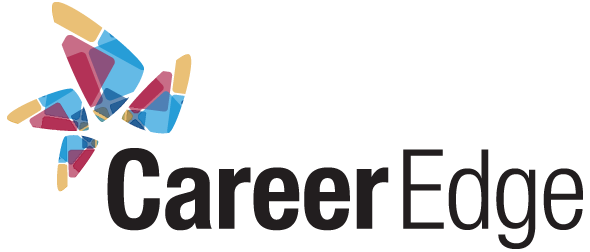
In today’s rapidly evolving and demanding work environments, the looming spectre of burnout has grown more significant than ever. The daily grind and personal and professional pressures can take a toll on both employees and the organizations they work for.
Recognizing the signs, understanding the root causes, and working to combat burnout has become necessary for leaders and employers alike. This article will delve deeply into burnout, concentrating on how employers and leaders can play a pivotal role in preventing, identifying, and addressing this pervasive issue.
Signs and Symptoms of Burnout
So, how does burnout happen?
Burnout doesn’t happen overnight; it’s a gradual process that can sneak up on you. Early signs and symptoms are like red flags, indicating something is amiss and should be addressed.
Learn to notice the first signs of burnout, which fall into three categories.
Physical Signs and Symptoms of Burnout
- Feeling exhausted and drained most of the time.
- Lowered immunity, leading to frequent illnesses
- Frequent headaches or muscle pain
- Changes in appetite or sleep habits
Emotional Signs and Symptoms of Burnout
- Sense of failure and self-doubt.
- Consistently sad, overwhelmed, or stressed, even over small issues.
- Detachment from loved ones.
- Lack of motivation and an increasingly cynical and negative outlook.
- Decreased satisfaction and sense of accomplishment
- Loss of Interest in activities once enjoyed can feel like chores, leading to mindless activities and social media scrolling.
Behavioural Signs and Symptoms of Burnout
- Withdrawing from responsibilities.
- Isolating from others.
- Procrastinating and taking longer to complete tasks
- Quickly becoming irritated with colleagues or clients.
- Skipping work, coming in late, and leaving early.
- Reduced Productivity and diminished performance.
Depression Vs Burnout
Many people struggle with depression. While burnout and depression have similar symptoms, they are not the same thing.
Stress Vs Burnout
If you’re feeling stressed because of an approaching deadline or an interview, which is entirely different than burnout, here is how they are different.
What Causes Burnout?
Burnout can be either circumstantial or existential. Understanding which type you are experiencing can help you customize your recovery approach.
Chronic stress is the leading cause of burnout, worsened by situational and individual factors. At its core, burnout comes from overlooking the importance of rest. The Effort-Recovery Theory explains that every task consumes us psychologically and cognitively and that recovery through breaks is essential.
Here are the different factors that might cause burnout.
Individual Factors
- Pursuing perfectionism across all aspects of one’s work without considering priorities.
- Overemphasizing the significance of work, making it the sole focus of one’s life.
- Low self-esteem, cognitive rigidity, emotional instability, and an external locus of control
- Difficulty in setting boundaries
- Having high expectations of oneself and an amplified professional conscience.
- Struggling with delegation or team collaboration in a stressful environment.
- Inadequate adaptation strategies, including dependence, poor time management, a high need for support, unwise lifestyle habits, and challenging interpersonal relationships.
- Possessing a highly driven, ‘A-type’ personality with a strong inclination toward competitiveness and a need for control.
Situational Factors
- Overwhelming workloads and work overload.
- Values conflict on the job, where a discrepancy exists between personal and organizational values, leading to stress as workers grapple with the divergence between their beliefs and job requirements.
- Struggling to maintain a work-life balance because of family responsibilities
- A lack of control and an inability to participate in decisions related to one’s work
- Insufficient reward and recognition, encompassing financial compensation, esteem, and respect, can devalue an individual’s contributions and heighten feelings of inefficacy.
- A ‘Toxic’ Community is characterized by unresolved conflicts, a lack of psychological support, poor communication, and mistrust.
- Unfair treatment or incivility in the workplace leads to cynicism, anger, and hostility.
- Poorly defined responsibilities, ambiguous roles, and demanding schedules that persist over time.
- Unclear Expectations and uncertainty about roles and expectations can lead to stress and frustration.
What are the consequences of untreated Burnout?
Burnout is so dangerous if left untreated. It’s not a wave to ride. Ignoring symptoms or not giving yourself the rest your body needs will lead to severe consequences. You may find yourself stuck in a cycle of burnout that would take years to get out of.
Untreated burnout might also lead to physical illnesses. Some people reported that it led to physical symptoms such as headaches, muscle pains, and depression.
How to Recover from Burnout
Burnout is a significant problem which impacts personal well-being and business success. The best strategy to overcome burnout is to react once you recognize signs of it. The earlier you act, the better it will be to prevent and overcome burnout.
Here is a recovery plan with some activities and lifestyle changes you can try to recover from burnout.
Identify Symptoms and Triggers
- Recognize and Acknowledge Burnout
- Understand the signs and symptoms, and be honest with yourself about your mental and emotional state.
- Figure out the culprit. This will allow you to step away from the stressors. For example, it could be that you haven’t taken any time off in a while or that you’re working on a project that doesn’t align with your work, etc.
Reevaluate Work & Life
- Consider adjusting your work environment and readjust your work-life balance
- Discuss workload or other concerns with your supervisor.
- Seek Support and communicate with your employer and HR to seek mental health support.
- Consider taking a break from work to rest and recharge. Use this time to focus on self-care and relaxation.
- Implement lifestyle changes to restructure your life and break the cycle.
- Reflect on your goals and values to ensure they align with your personal interests and well-being. Make adjustments if necessary.
Inefficacy Recovery
- Prioritize tasks based on motivation (want-to goals) and necessity (have-to goals).
- Identify inefficiencies and remove unnecessary steps.
- Assess the perceived attainability of your goals.
Exhaustion Recovery
- Reset your sleep schedule: Consistent sleep schedules and relaxing bedtime activities can help you sleep better. Taking naps might help you rest during the day.
- Allocate time for hobbies, leisure, and activities that bring you joy.
- Prioritize nourishing meals, eat a balanced diet and avoid fast food even if you use meal kits or grocery delivery to reduce stressors.
- Exercise can improve your mental health and reduce depression and anxiety. You don’t need much gear to start, or you can set up a home gym.
- Engage in self-care activities that promote relaxation and stress relief.
Cynicism Recovery
- Reframe Your approach/avoidance goals
- Split your goals into approach-focused and avoidance-focused tasks.
- Reframe avoidance-focused goals into approach-focused ones.
- Set implementation intentions for goals that remain in the avoidance-focused category
Mental Health Recovery
- Journaling can be an effective method to track your habits and mood in an analog and private way, as well as reflect on what matters to you in your career and personal life.
- Practice self-compassion. Cut yourself some slack and normalize taking time to recover.
- Track your stress levels can help you spot and reduce stress when you’re overwhelmed.
- Implement stress management techniques into your daily routine, such as meditation, breathing exercises, calming massages, and relaxation playlists.
- Establish personal and professional boundaries. Learn to say no to additional commitments when necessary to protect your well-being.
- Talk to your friends and family about your stress levels and accept their support.
- Talk to a mental health professional who can provide expert advice and guidance.
How Long Does It Take To Recover From Burnout?
The recovery length varies from person to person, the situation, but the strategies and timing of the intervention you apply can make a big difference.
Because of variation, recovery time can take anywhere from a few weeks to several years.
Recovering from burnout can be a challenging journey, but it’s possible with the right strategies and support. Remember that burnout recovery is a personal journey, and it may take time. Be patient with yourself and prioritize self-care as you work toward a healthier, more balanced life.






